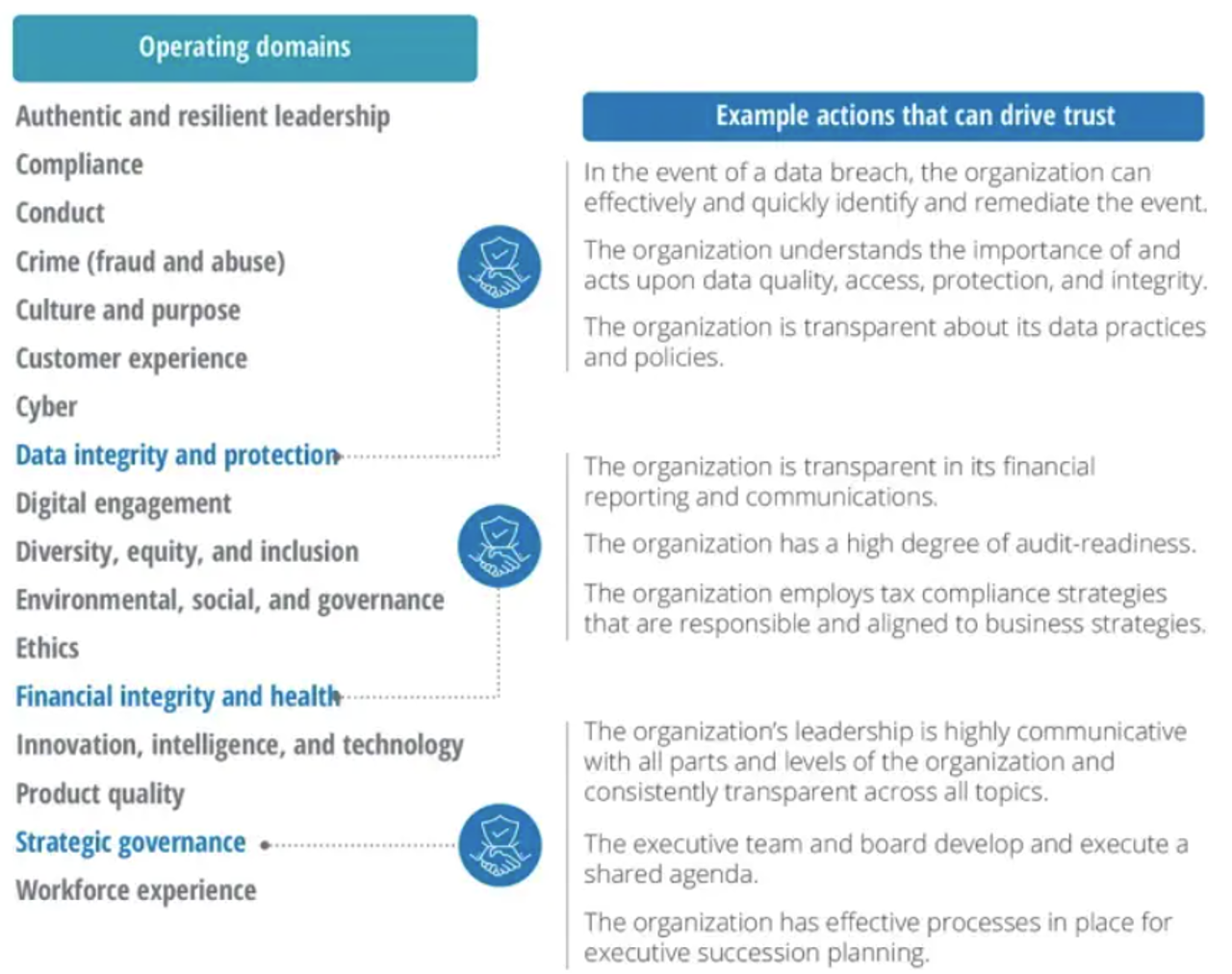
In business we trust.
According to the 2022 Edelman Trust Barometer, business was the most trusted of four major institutions. Its 61% approval rating topped those of government, non-governmental organizations and the media.
That would be small comfort to those blindsided by the collapse of cryptocurrency exchange FTX, which was said to have more than 100,000 creditors and both assets and liabilities in the $10 billion to $50 billion range when it filed for U.S. Bankruptcy Court protection in November.
Or try easing the pain of thousands of tech workers at Twitter and Facebook parent Meta who were told in the weeks before Thanksgiving that they’d learn of their layoffs by email.
Trust is a subjective proposition, stemming from a social contract of sorts between a company and all its stakeholders.
With all the buzz around stakeholder capitalism in recent years – corporate responsibilities beyond profit-making and investor returns were in the spotlight of the World Economic Forum’s 2021 Davos Agenda – it stands to reason that trust is critical in building and sustaining relationships between businesses and their broader constituencies.
And yet, trust is often considered more of an outcome, rather than an ongoing organizational dynamic that needs tending to.
Why is it that trust is typically talked about only when broken, such as when a scandal has surfaced and damage has been done? By then it can seem like it’s too late, particularly in a cancel-culture environment, with consequences potentially catastrophic for all parties concerned and to a company’s reputation and/or brand. Thanks to the social media megaphone, company reputations and trust are continually at risk.
It takes a long time to build trust, but it can be lost in an instant.
Plan Ahead
Management and risk experts have recommended getting out ahead of it, especially during these tumultuous and uncertain times.
“Overall, the business world has done a terrible job of understanding the importance of trust,” Harvard Business School professor Sandra J. Sucher and research associate Shalene Gupta wrote in The Power of Trust: How Companies Build It, Lose It, Regain It (2021).
“We tend to think of trust as a result of managing our reputations,” they asserted. “In actuality, trust is built from the inside out.”
“Typically, until a trust breach happens, you can maintain that position of thinking things are going OK,” maintained Michael Bondar, Deloitte Risk & Financial Advisory enterprise trust leader and principal, Transactions and Business Analytics. He believes the time to tackle trust is before it ever gets to the breaking point.
“Trust has significant implications on both the positive and negative side relative to company performance,” Bondar explained. “It’s about a high degree of competence that a company has to display as well as the right intent. Those two have to be in balance.”
Rare and Valuable
Sim Segal, president of enterprise risk management consulting firm SimErgy, emphasized, “Trust builds in any relationship – personal, professional, and even consumer interactions – through open, honest communication over time.
Sim Segal of SimErgy Consulting: “Always the best business decision.”
“It’s rare, which makes it even more valued,” he elaborated in an exchange of emails. “Organizations, just like individuals, reveal the strength of their integrity when under stress. During tough times, organizations should take special care to continue to do the right thing, even under pain of short-term costs.
“Not only is it ethical, but it’s also always the best business decision in the long run,” said Segal, who is founder and director of, and senior lecturer in, Columbia University’s Master of Science in ERM program and author of Corporate Value of Enterprise Risk Management (2011).
“A Bit of a Disconnect”
In a poll by Deloitte of over 260 C-suite executives who participated in a September webcast, Quantifying Customer Trust, 61% reported their organizations plan to improve trust levels with “key” stakeholders in the next year. But only 19% have a C-suite-level leader in place to manage the efforts, and 14% a way to track stakeholder trust levels.
The results, Bondar remarked, exposed “a bit of a disconnect,” as did conversations with clients.
He proposed paying more attention to trust and making it, in and of itself, a strategic priority – an asset and, by extension, a risk – to be defined, managed and quantitatively measured.
Bondar suggests three basic steps businesses can take to start putting together an “enterprise trust strategy”: Define what trust means to the organization; identify gaps between trust goals and what’s actually being done; and address the gaps in a genuine way. He also supports putting a chief trust officer in charge.
Leadership and Tone
The consultant pointed to 17 interconnected operating domains (see chart) Deloitte has identified to help organizations deal with evaluating trust across the enterprise.

“This culture of trust is essential, and the tone begins at the top,” Bondar commented. “We’re seeing a lot of clients beginning to introduce trust into their mission statements, into their values.
Deloitte’s Michael Bondar: Appoint a chief trust officer.
“Trust is not just a topic for a single leader,” he continued. “Even for those organizations that have identified the role and have that leader, it does not absolve the rest of the C-suite from ownership, accountability and responsibility for their part of this expansive topic.
“We also see boards becoming more aware and requesting their management teams to take actions in this area,” he observed. “The entire organization has to get its arms around it.”
A Role for ERM
Segal acknowledged that the ERM function might be a good fit for managing trust, or at least providing a model for how to do so as a company-wide collabortive effort.
“A value-based ERM framework, which quantifies risk scenarios by impact on company value, is used by companies to illustrate and prioritize focus on potential risk events involving temporary or lasting reputational damage; provide an understanding of where and how these events destroy value; and inform appropriate mitigation actions,” Segal shared.
He offered that when trust is broken, “the basis of the relationship crumbles and it’s difficult and costly to rebuild.”
As the Harvard trust experts noted in their book, “Trust, once broken, cannot easily be regained.” But, they added, “a trust betrayal does not necessarily mean game over.”
L.A. Winokur is a veteran business journalist based in the San Francisco Bay Area.
Topics: Enterprise